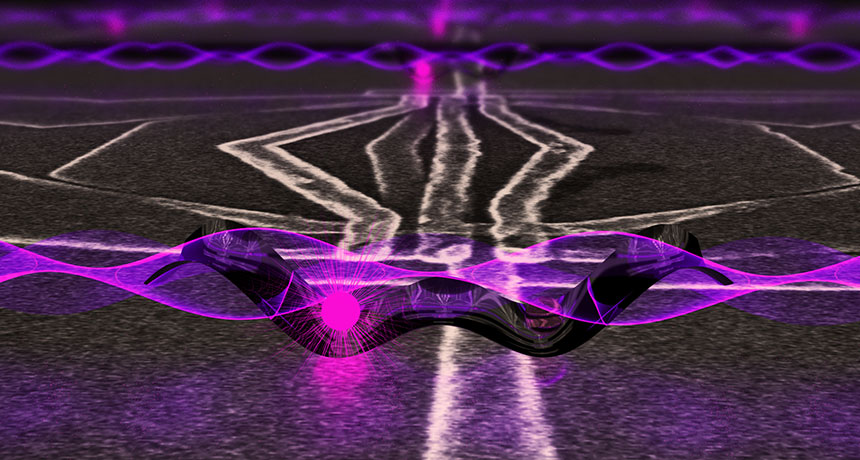Quantum computers go silicon

For quantum computers, silicon’s springtime may finally have arrived.
Silicon-based technology is a late bloomer in the quantum computing world, lagging behind other methods. Now for the first time, scientists have performed simple algorithms on a silicon-based quantum computer, physicist Lieven Vandersypen and colleagues report online February 14 in Nature.
The computer has just two quantum bits, or qubits, so it can perform only rudimentary computations. But the demonstration is “really the first of its kind in silicon,” says quantum physicist Jason Petta of Princeton University, who was not involved with the research.
Petta and colleagues report making silicon qubits interact with light in another paper also published online February 14 in Nature. That feat could eventually allow silicon qubits to communicate from opposite sides of a chip — a necessity for scaling the computers up.
Scientists want to build a quantum computer that can perform complex calculations impossible for standard computers. Other technologies are further along than silicon: Quantum computers made of superconducting materials, for example, have reportedly been made with up to 50 qubits (SN: 12/9/17, p. 18).
But silicon qubits may have advantages, such as an ability to retain their quantum properties longer than other types of qubits. Plus, companies such as Intel are already adept at working with silicon, because the material is used in traditional computer chips. Researchers hope to exploit that capability, potentially allowing the computers to scale up more quickly. Vandersypen, of QuTech at Delft University of Technology in the Netherlands, and his colleagues have partnered with Intel on some of their work.
In standard computers, units of information called bits can be set to either 0 or 1. Qubits, however, can exist in a limbo between 0 and 1 known as a quantum superposition. To create silicon qubits, scientists trap a single electron in a tiny bit of silicon called a quantum dot. The value of the qubit — 0, 1 or a superposition — depends on the direction of the electron’s spin, a quantum property analogous to the spinning of a top.
Vandersypen and his collaborators created a device consisting of two quantum dots, and executed a pair of standard quantum algorithms, including one called Grover’s search. In a larger quantum computer, Grover’s search could be used to dig up information in a database more quickly than traditional computers can (SN: 7/8/17, p. 28). “It is a big symbolic step,” Vandersypen says.
Typically, silicon qubits must be next to one another to interact. But by adding a miniature magnet into the mix, Petta and colleagues made their qubits interact with particles of light, or photons. In the future, photons could allow for communication between silicon qubits on opposite ends of a chip. The result is “an important step in realizing future networks of many quantum bits,” Vandersypen says.